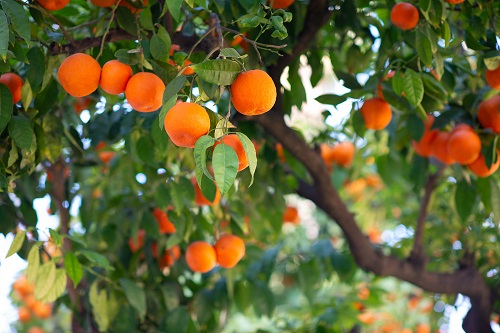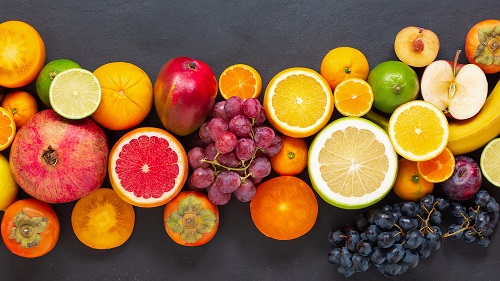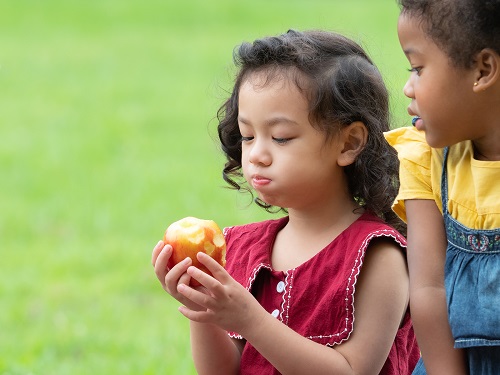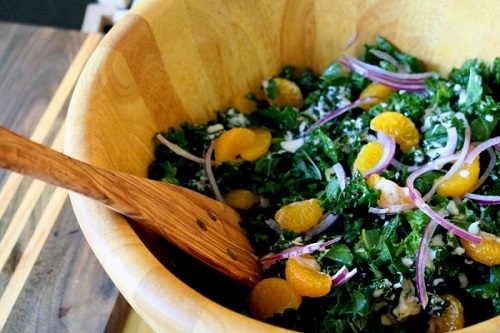Fruit can be an easy way to get fiber, vitamins, and energy. Although some fruits flourish in the summer, others are at their peak of ripeness when the weather cools down. Enjoy fruit year-round with fall and winter fruits!
Each month this year, we are featuring a different food group or sub-group as part of our Food Talk Features… Series. Last month, we picked out the most delicious protein foods. Protein is a nutrient that gives our bodies energy and keeps us full between meals. It keeps bones, muscles, and organs strong. Plus, protein foods have other helpful vitamins and minerals that support our health in many other ways! Check out our Protein Foods blog to learn more!
This month, we’re cooling things down with members of the fruit group that are best in the fall and winter. Citrus fruits and others like apples, grapes, and pears come in season as the days get shorter. Mind if we squeeze in a quick lesson about the benefits of these fruits?

What are the benefits of fall and winter fruits?
Choosing fruit that is in-season can save money. It can also help you get a variety of nutrients from different fruits! In addition to keeping money in your wallet and nutrients in your body, fruits are naturally low in fat, sodium, calories, and are cholesterol-free. [1]
Fall fruits include:
- Apples
- Cranberries
- Grapes
- Pears
- Persimmons
- Figs
Winter fruits include:
- Citrus fruits like oranges, grapefruit, pomelo, tangerines, mandarin oranges, lemons, and limes
- Kiwifruit
- Kumquat
- Pomegranate

Fruits are known for being easy sources of fiber and water. A good balance of fiber and water is necessary for healthy digestion. A diet with enough fiber may also reduce the risk of heart disease and diabetes. [2] These fall and winter fruits have a lot of fiber and water. For example, one medium pear has almost 6 grams of fiber—that’s about 20% of the daily fiber intake recommendation! [3]
Many of these fruits, like citrus, kiwifruit, cranberries, kumquat, and persimmons, contain plenty of vitamin C. Getting enough vitamin C supports the immune system and maintains healthy tissues (like the skin, teeth, and gums). It acts as an antioxidant, which helps to fight off illness. [1] [4] [5]
In general, eating the “rainbow” of colorful fruits (and vegetables!) is beneficial to our health. With so many fruits in-season in the fall and winter, we can eat the rainbow year-round!

How much do I need?
The amount of fruit we need every day depends on many factors. Most adults should aim for 1 ½ to 2 ½ cups of fruit every day. In general, 1 cup of fruit or 100% fruit juice, or ½ cup of dried fruit counts as 1 cup of fruit. [1]
A 1 cup-serving is about the size of an adult’s closed fist. A ½ cup-serving is half of a fist, or however much fits in the palm of one hand. Some examples of a 1 cup-serving include:
- 1 small apple
- 1 large orange or grapefruit
- 1 cup sliced grapes (over 20 whole grapes), kiwifruit (2-3 whole kiwifruit), or kumquats (10 whole kumquats)
- ½ cup raisins
Eight fluid ounces of 100% fruit juice counts as 1 cup-serving of fruit, too. Juice has less fiber than eating the whole fruit, so eat fresh, frozen, or canned fruits when you can. However, juice will still provide lots of vitamins to support health!

Fall for these cool-weather fruit recipes!
Many Americans don’t eat enough fruit. As a result, we may not get enough vitamins and minerals to keep us healthy. If you’re looking to add more fruit to your diet this season, try these recipes with fall and winter fruits!
- Try this Kale and Orange Salad, made with mandarin oranges (you can use fresh instead!) and a tangy homemade dressing.
- Enjoy grapes in our Festive Tuna Salad for a sweet and savory combination.
- Take a bite out fall with our many apple recipes: Apple Nachos, Apple and Veggie Omelet, Crunchy Apple Salad, and Harvest Kale Salad made with granny smith apples!
For a filling snack, pair a piece of whole fruit (like an apple, pear, a handful of figs or grapes) with foods that contain protein and fat. This combination of nutrients will keep you satisfied until your next meal! For more tips about putting together a healthy snack, check out our blog on Smart Snacking.
Fruit is our not-so-secret weapon for healthy digestion and immunity! Enjoy fruit year-round by picking in-season options. Curious about other in-season produce? Our What’s in Season? Chart can help you out!
What fall and winter fruit are you most excited about?
Written by Melanie Ng, Ph.D. Candidate | Edited by Leslie Davis, MS, RD, LD, CDCES and the Nutrition Education Team
Posted: September 13, 2021
[2] Mayo Clinic—High Fiber Foods
